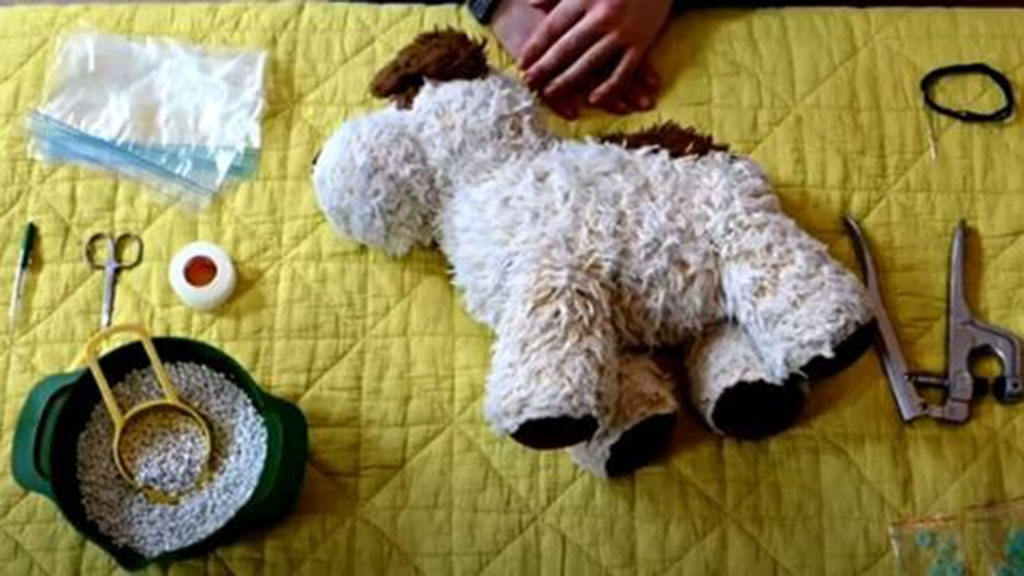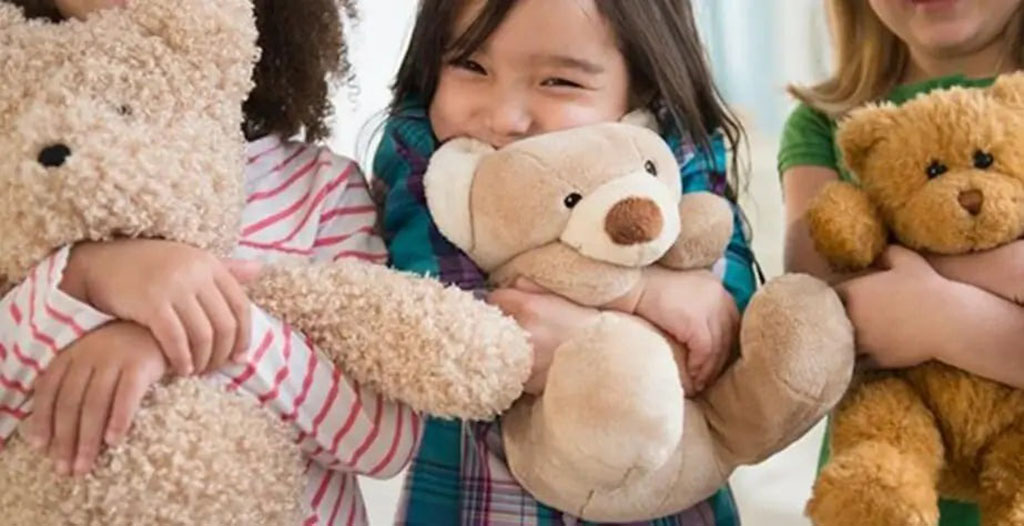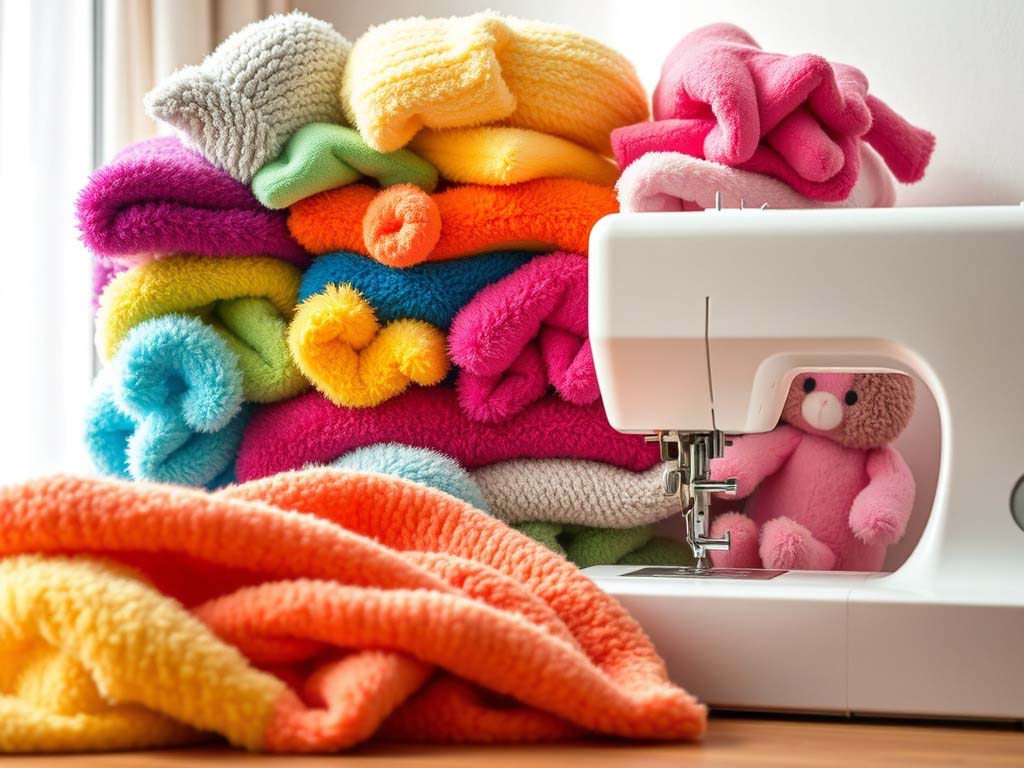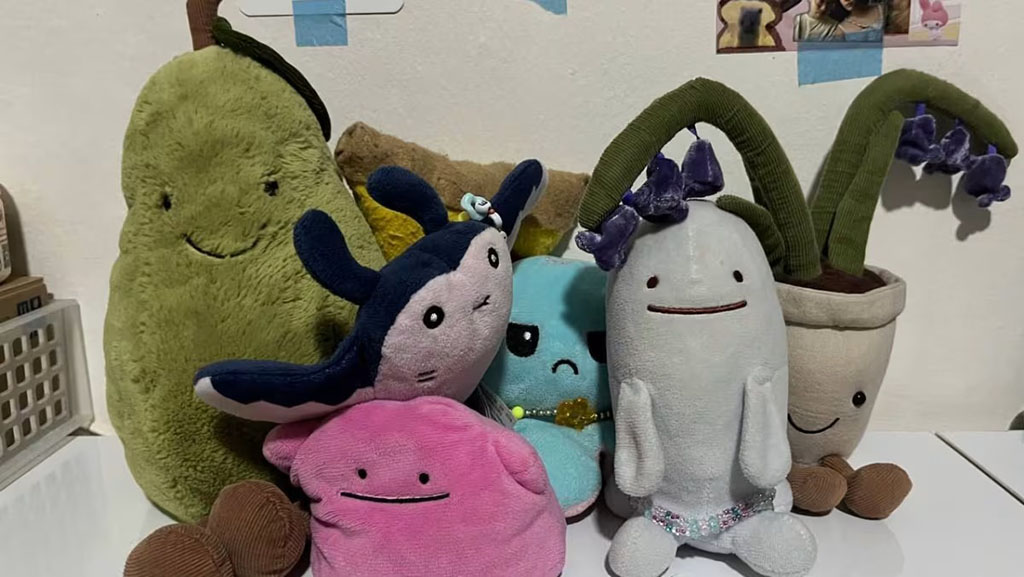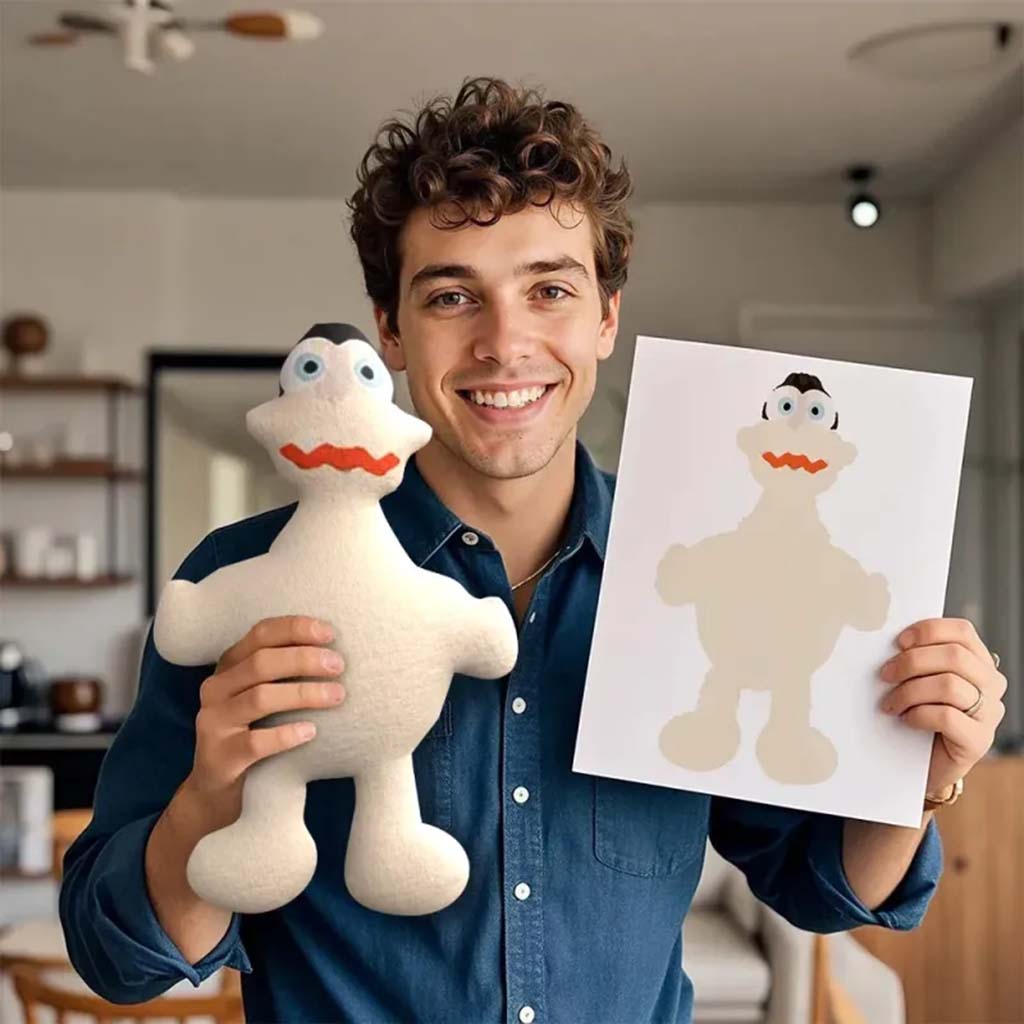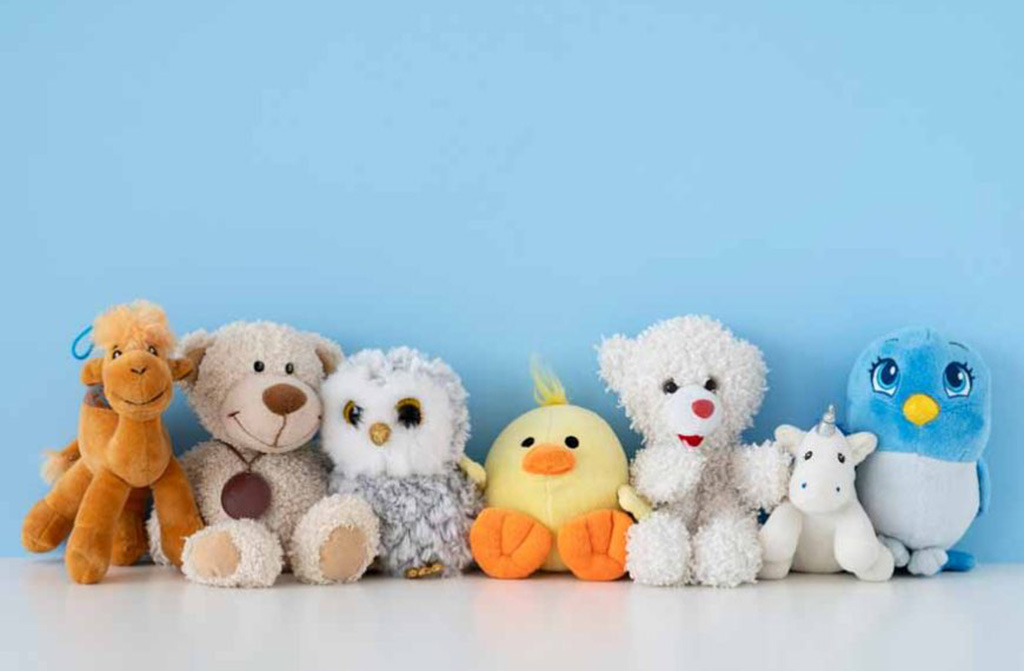By Amanda — Kinwin (OEM/ODM plush manufacturer; CE/ASTM/CPSIA ready)
Soft toys feel great when the filling is right. Buyers ask me the same question in every project: What stuffing should we use? The short answer: polyester staple fiber (PSF) is the global standard because it is soft, clean, washable, consistent, and cost-effective. In this guide, I explain which polyester grades work best, how fiber specs change the hug, what compliance requires, where natural or alternative fillings make sense, and how rPET/GRS options affect cost and MOQs.
What is the industry-standard stuffing material for soft toys today?

Across baby, retail, and promotional markets, the default stuffing is polyester staple fiber (PSF). It delivers the best balance of softness, loft, rebound, hygiene, price, and availability. PSF is easy to source worldwide, simple to process on filling machines, and stable through washing and shipping. For most brands, it also clears safety and chemical compliance with fewer variables than natural fills.
Why factories prefer PSF:
- Consistent quality lot to lot (denier, crimp, cut length).
- Washable & quick-drying, with low odor retention.
- Hypoallergenic compared with some natural fibers.
- Good loft and bounce for cuddly feel at moderate weight.
- Cost-efficient and available in many certified variants (e.g., rPET, GRS).
Where PSF is not ideal: heavy sensory products (where weighted pellets are needed), or specialty niches that demand natural branding (organic cotton or wool) and accept the trade-offs.
Table 1 — Stuffing Landscape at a Glance
| Stuffing Type | Feel & Performance | Hygiene/Wash | Cost & Sourcing | Common Use |
|---|---|---|---|---|
| Polyester Staple Fiber (PSF) | Lofty, resilient, soft | Excellent | Best balance | Mainstream toys |
| 3D Hollow Conjugate PSF | Lighter, springy, high rebound | Excellent | Slightly higher | Premium cuddle toys |
| Siliconized PSF | Extra slick, silky squeeze | Excellent | Slightly higher | Baby/comfort lines |
| Poly Pellets / Glass Beads (pouched) | Weighted, sensory | Washable when pouched | Adds cost/handling | Bases, therapeutic plush (older age) |
| Natural Cotton/Wool | Natural brand story | Variable (longer dry) | Higher, supply variable | Niche eco lines |
| Foam Chips/Inserts | Structured support | Surface-clean mainly | Project-specific | Snouts, bases, frames |
Which polyester fiber grades (PSF, 3D hollow conjugate, siliconized) are most preferred and why?

Within polyester, grades matter. We typically spec one of three workhorse fills, or a blend of them.
- Standard PSF: Balanced loft and cost; good for general plush.
- 3D Hollow Conjugate Fiber (HCF): Hollow core + spiral or side-by-side crimps create more air entrapment and bounce at lower weight—great for “cloud” hugs.
- Siliconized PSF/HCF: A light silicone finish on fibers lowers friction, improving silky handfeel and recovery after compression.
When to pick each:
- Choose standard PSF for everyday value SKUs.
- Choose 3D HCF when you want plush that “springs back” quickly and feels airy.
- Choose siliconized (often combined with HCF) for ultra-soft baby lines or where shelf-life compression is a risk.
Table 2 — Polyester Filling Grades (Buyer’s Quick Guide)
| Grade | Hug Feel | Rebound | Wash/Dry | Unit Cost | Best For |
|---|---|---|---|---|---|
| Standard PSF | Soft, balanced | Good | Good | $1.30–$2.10/kg | Core SKUs, promotions |
| 3D Hollow Conjugate | Airy, plush | Very good | Very good | $1.60–$2.60/kg | Premium cuddle toys |
| Siliconized PSF/HCF | Silky, low friction | Very good | Very good | $1.80–$2.90/kg | Baby/comfort, anti-matting |
| Micro-denier PSF | Ultra-buttery | Good (can pack) | Good | $2.60–$4.20/kg | Premium faces/body zones |
| PSF + Pellets (zoned) | Soft + stable base | Zone-dependent | Pouched wash | PSF $1.30–$2.10/kg + PP pellets $2.20–$3.80/kg | Sit-stable plush, sensory weight |
How do denier, crimp, and silicone finish influence loft, rebound, and handfeel?

Three micro-parameters decide the hug:
- Denier (fiber fineness):
- Lower denier (e.g., 0.9–1.5d) feels silkier, with more points of contact; may pack if under-filled.
- Higher denier (≥3d) feels sturdier, resists packing, but less buttery.
- Crimp (waves per length):
- Uniform, moderate crimp traps air and gives rebound. Too little = flat; too much = bulky or springy to a fault.
- Silicone finish:
- Reduces fiber-to-fiber friction → smoother squeeze, better recovery, lower noise; over-finishing can feel waxy if quality is poor.
Table 3 — Fiber Parameters → User Experience
| Parameter | Softer Setting | What Improves | Watch-outs |
|---|---|---|---|
| Denier | 0.9–1.5d | Silky hand, surface drape | May require slightly higher fill weight |
| Crimp | 6–10 cpi, uniform | Loft, bounce, shape memory | Excess crimp can feel “springy” |
| Silicone | Light micro-emulsion | Glide, anti-matting, quiet squeeze | Low-grade silicone can feel oily |
Practical tip: For most cuddle plush we run a siliconized 3D HCF blend—light, bouncy, and silky without collapsing.
What do safety and hygiene standards (CPSIA/EN71, cleanliness/bioburden) require for stuffing fibers?

Stuffing is not just about feel; it must be safe, clean, and traceable.
Core toy standards the final toy must meet:
- EN 71-1/2/3 (EU): mechanical/physical safety, flammability, and chemical migration (e.g., heavy metals from any component).
- ASTM F963 (US): mechanical/physical (seam strength, small parts).
- CPSIA (US): lead and phthalates limits; tracking labels.
Fiber cleanliness & hygiene expectations (brand and retailer best practices):
- Cleanliness specs for PSF (low bioburden, low moisture, no foreign matter).
- Odor & contaminant controls; metal detection at line (for toys).
- Colorfastness is mostly a fabric concern, but we ensure no dye carry-over if blended materials are used.
Documentation: Keep lot numbers, COCs, and test reports tied to your PO/SKU. If using rPET, ensure GRS chain-of-custody and confirm wash/flake quality to avoid odor or variability.
Table 4 — Compliance & Hygiene Checklist for Stuffing
| Requirement | What We Check | Why It Matters |
|---|---|---|
| EN 71-1/2/3, ASTM F963 | Final toy testing | Legal sale in EU/US |
| CPSIA (lead/phthalates) | Materials screening | Chemical safety |
| Cleanliness/bioburden | Supplier cleanliness spec | Hygiene, odor control |
| Moisture content | Within supplier spec | Prevent mold and clumping |
| Metal detection (finished goods) | Line QC | Foreign body prevention |
| Lot traceability | Batch → PO/SKU link | Recalls & audits ready |
Are natural or alternative fillings (cotton, wool, foam, microbeads) viable versus polyester staple fiber?

They are viable for defined niches, but each has trade-offs:
- Natural Cotton: Natural story and soft hand, but heavier, slower to dry, and can compact over time. Hygiene control is more demanding.
- Wool: Warm and resilient; allergen considerations and odor risk if not processed well; costlier.
- Foam chips/inserts: Great for shape support (snouts, bases). Not a universal replacement; usually surface-clean only if not fully encased.
- Microbeads / Poly Pellets / Glass Beads: Provide weighted sensory feel when sealed in inner pouches. Not a main fill; use zoned.
- Buckwheat hulls, seeds, rice, sand: Rare in modern toys due to hygiene and moisture risks; typically not recommended.
Table 5 — Alternatives vs. PSF (Use With Care)
| Filling | Pros | Cons | Where It Works |
|---|---|---|---|
| Natural Cotton | Natural claim, soft | Heavy, compacts, slow dry | Eco-story lines (small runs) |
| Wool | Warm, springy | Allergen/odor risk, cost | Premium niche |
| Foam Chips/Inserts | Structure, sculpting | Wash limits, aging | Snouts, bases, frames |
| Pellets/Beads (pouched) | Weighted, soothing | Extra sewing/QC, age limits | Bases, sensory toys (older age) |
| Buckwheat/Seeds/Rice | Natural weight | Moisture/mold risk | Generally avoid for toys |
Bottom line: For most SKUs, PSF (often 3D HCF + silicone) stays the best all-rounder; use alternatives selectively.
How do sustainability options (rPET, GRS) and cost/MOQ factors shape stuffing selection?

Sustainability is now mainstream. Many buyers choose rPET (recycled polyester) stuffing to align with ESG goals—especially in the EU, North America, and Japan.
What to consider:
- GRS (Global Recycled Standard): Ask for GRS-certified PSF and chain-of-custody documentation.
- Handfeel parity: Good rPET fills can match virgin PSF; lower-grade rPET may feel stiffer or carry residual odors—screen suppliers.
- Cost & MOQ: rPET usually costs a bit more and may have higher MOQs or longer lead times, especially for specific denier/crimp blends.
- Marketing: Pair rPET stuffing with rPET fabric or eco packaging for a full claim, and keep proof on file (buyers increasingly audit).
Commercial planning tips:
- Lock a standard rPET grade for most styles; reserve niche blends for hero SKUs.
- Combine purchase orders to hit MOQs and stabilize supply.
- Keep test reports current; eco does not reduce EN 71/CPSIA obligations.
Practical bill-of-materials (BOM) templates I recommend

- Mainstream retail plush
- Stuffing: 3D Hollow Conjugate PSF, light silicone finish
- Zones: firmer fill at base, softer at torso
- Docs: supplier cleanliness spec + batch COA; toy tests to EN 71/ASTM/CPSIA
- Baby/comfort line
- Stuffing: siliconized micro-denier/3D HCF blend
- No loose pellets; all features embroidered
- Extra: saliva/sweat colorfastness on fabrics; verify acoustic level if sound module exists
- Eco-forward collection
- Stuffing: GRS-certified rPET 3D HCF
- Packaging: mono-material kraft, paper belly band
- Documentation: GRS chain-of-custody, updated lab tests (EN 71-3/CPSIA)
Conclusion
The most commonly used stuffing for soft toys today is polyester staple fiber—especially 3D hollow conjugate, often siliconized. It gives the best blend of softness, loft, rebound, hygiene, compliance, availability, and cost. Natural or weighted alternatives can add value in zones or niches, but PSF remains the reliable core. If you want an eco path, GRS-certified rPET is a strong, scalable choice—just plan MOQs and lead times.
At Kinwin, I help global buyers select the right filling, dial in fiber specs for the perfect hug, and pass EN 71/ASTM/CPSIA on the first attempt. If you’d like a side-by-side quote (standard PSF vs 3D HCF vs rPET), I’ll build it around your size, softness target, and budget.
Contact me at [email protected] or visit kinwintoys.com to spec the ideal stuffing for your next plush range.


